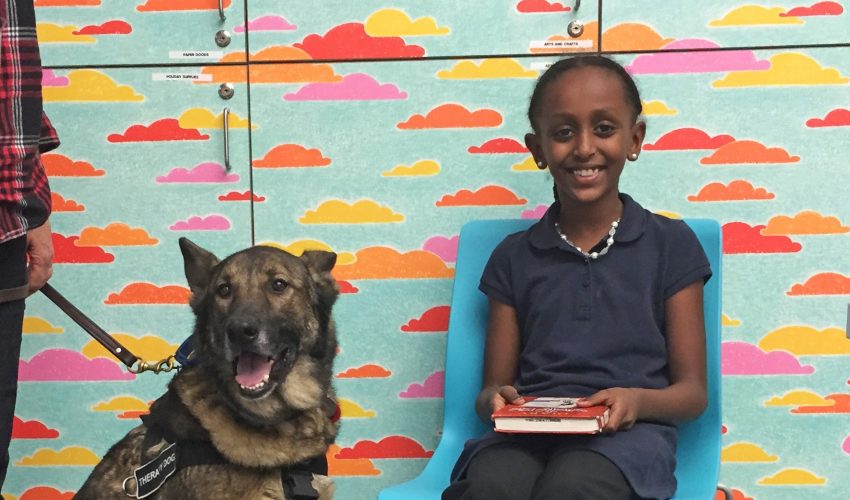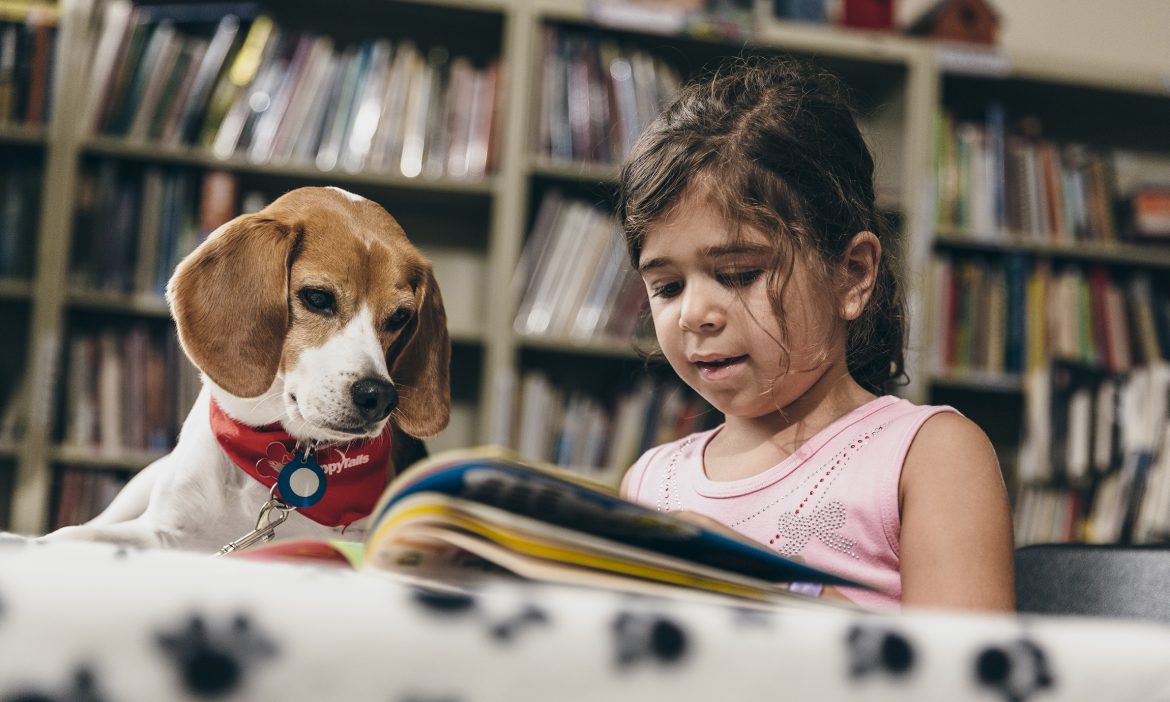If you think the name “Zarth” should come with superpowers, it just might at the Edmondson Pike branch of Nashville Public Library (NPL). There, a very good boy named Zarth does his own magic trick: he gets kids to line up to read, all without saying a word.
That’s because Zarth is a German Shepherd. He and trainer Toney Baily facilitate READing Paws, a program in which children read aloud to Reading Education Assistance Dogs (R.E.A.D.®) to help them develop skills and confidence. The Nashville affiliate of the program is part of the Be Well at NPL program, run by the library and funded in part by BlueCross BlueShield of Tennessee Health Foundation. It works because kids love dogs, of course, but the benefits of spending time with canine companions extend far beyond a child’s 15-minute session, especially if they are new or struggling readers.
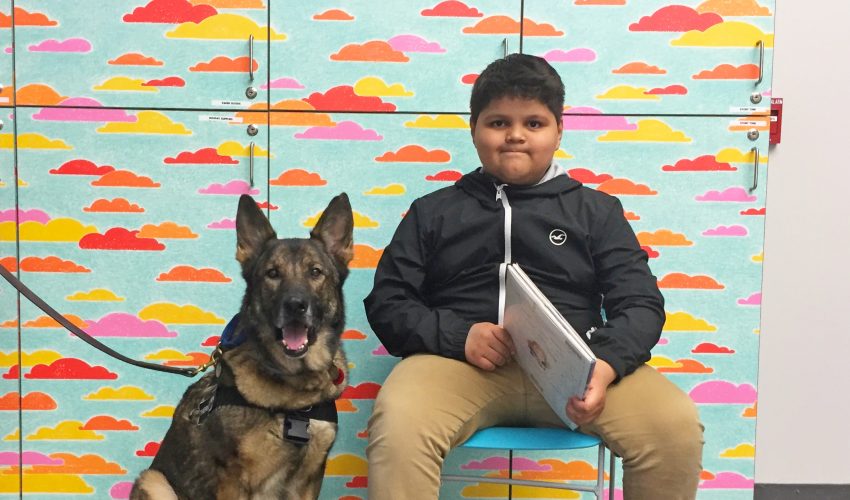
Zarth loves to spend time with all people young and old, "reading" at the library or visiting retirement homes.
“Children learning to read can get stressed, not because they aren’t capable of reading but because they get nervous and self-conscious,” says Merilee Kelley, chairman of READing Paws. “They worry about making mistakes, so they dread reading in front of their friends at school.”
“But dogs are trustworthy,” Kelley explains. “People know they don’t have to be worried or embarrassed around them.
“When kids read with a dog, they relax and forget about feeling nervous.”
“Pretty soon things start to flow, and before they know it, they’re enjoying reading instead of dreading it. It is simple, and it works beautifully.”
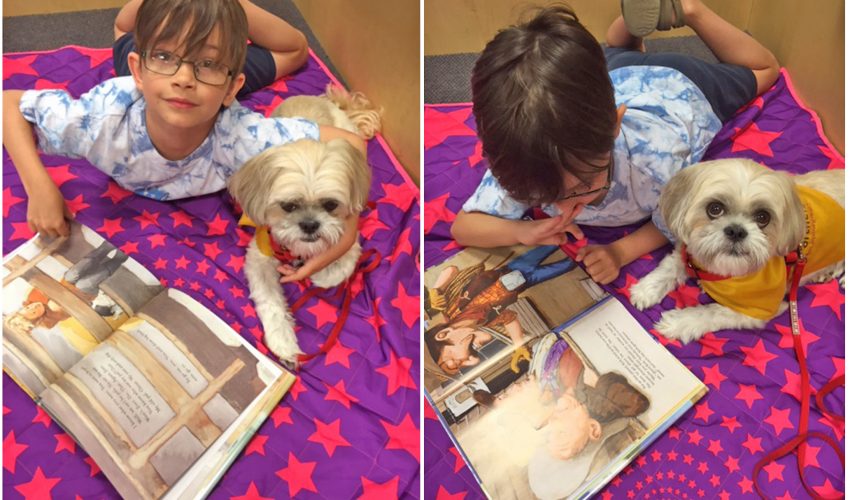
Why it works
For many parents and educators, getting children to spend time with a book instead of a screen is already a victory, but research shows that therapeutic environments created by animals have other positive effects.
Therapy animals can:
- Lower blood pressure
- Increase relaxation
- Help participants forget about limitations
- Stimulate the senses
- Foster feelings of safety and acceptance
- Build self-esteem
- Decrease loneliness
These effects start taking hold the moment Zarth walks into the library as children rush up to pet him excitedly. Librarians arrange a private space for readers and sign the children up for slots. Kids can bring their own books or pick one from the library to read. Once each child is settled and comfortable, Baily helps them work through the book they’ve chosen.
To become part of the READing Paws teams, R.E.A.D. suggests dogs complete the Canine Good Citizen Training & Test to ensure they have a safe, friendly demeanor. Humans and their animals go through rigorous training to become an insured registered therapy team because both must be prepared when issues arise, or when opportunities present themselves.
“If a child encounters a more advanced word, a trainer might say, ‘Gee, I don’t think Zarth has ever heard the word ‘interactive’ before — Can you tell him what it means?’” says Kelley. “If the child knows, great; if she doesn’t, they can get a dictionary, learn the new word together and explain it to the dog. It’s a less direct and intimidating approach than: ‘Do you know what that word means?’
“It empowers the child by turning her into the helper and teacher rather than focusing on what she doesn’t know.”

A singular accomplishment
The dogs can also foster breakthroughs that even the most well-trained people can’t simply because they are friendly, patient and non-judgmental by nature.
“I remember one 10-year-old girl we met who could hardly read at all,” recalls Kelley. “She gave the handler all kinds of reasons why she couldn’t read to Meg, the dog, and the handler reassured her that Meg wouldn’t be bothered by any of those things. When they sat down to read, it was a struggle. But she became engrossed in the book and kept at it, with Meg listening beside her. It took her 45 minutes to read one 32-page picture book, but when she turned over the to the last page, she gasped. ‘Oh my gosh! I’m finished!’ she said.
‘I’ve never read a whole book before in my life!’
“She got to go home that day with a singular accomplishment. That’s the kind of experience that builds self-esteem.

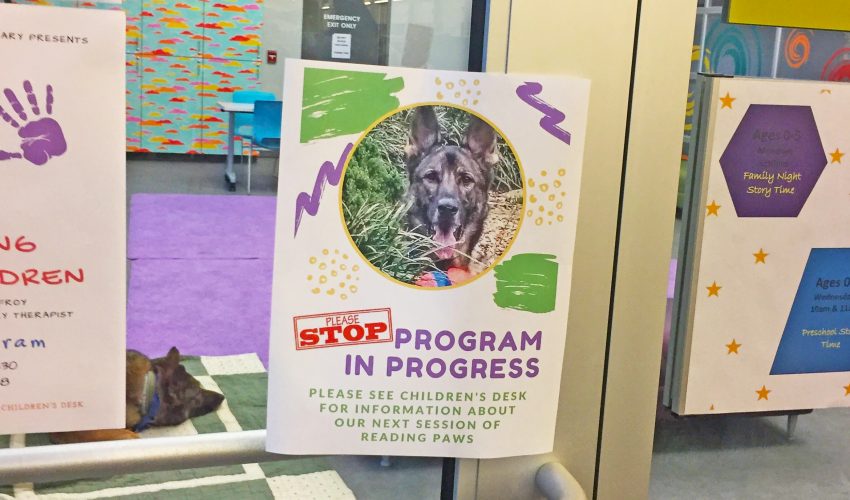
Creating a safe space
READing Paws dogs are deployed throughout the community, to libraries but also to schools, where they do some of their most important work. The dogs have proven particularly effective for children who face challenges at home.
If English is their second language, kids can take their time sounding out new words without fear of judgment, and the same is true for children who have learning challenges like dyslexia or attention problems. If a child’s parents can’t afford books, their time with READing Paws is even more important, and they can earn their own book just by reading.
“Children who struggle to read well often have quite challenging home situations and few books,” says Kelley, “so in our school program, after a child reads 10 books, we let him select a shiny new book to keep, and his therapy animal ‘pawtographs’ it. Having a new book of their own is precious to kids.”
Children place importance on owning objects. Understanding ownership builds confidence and independence and helps children develop a sense of boundaries.
For children whose households are unstable or volatile, the dogs play an even more crucial role: creating a safe space.
“Children who have suffered or are suffering emotional or physical abuse find it difficult to trust people or to open up,” says Kelley.
“Dogs are different. They always present their whole selves — there’s no pretense, no holding back — so a child can be fully him or herself.”
“We don’t think about it as profound, but for those kids, reading with a dog might be the only 15 minutes of their week that they feel truly free.”
